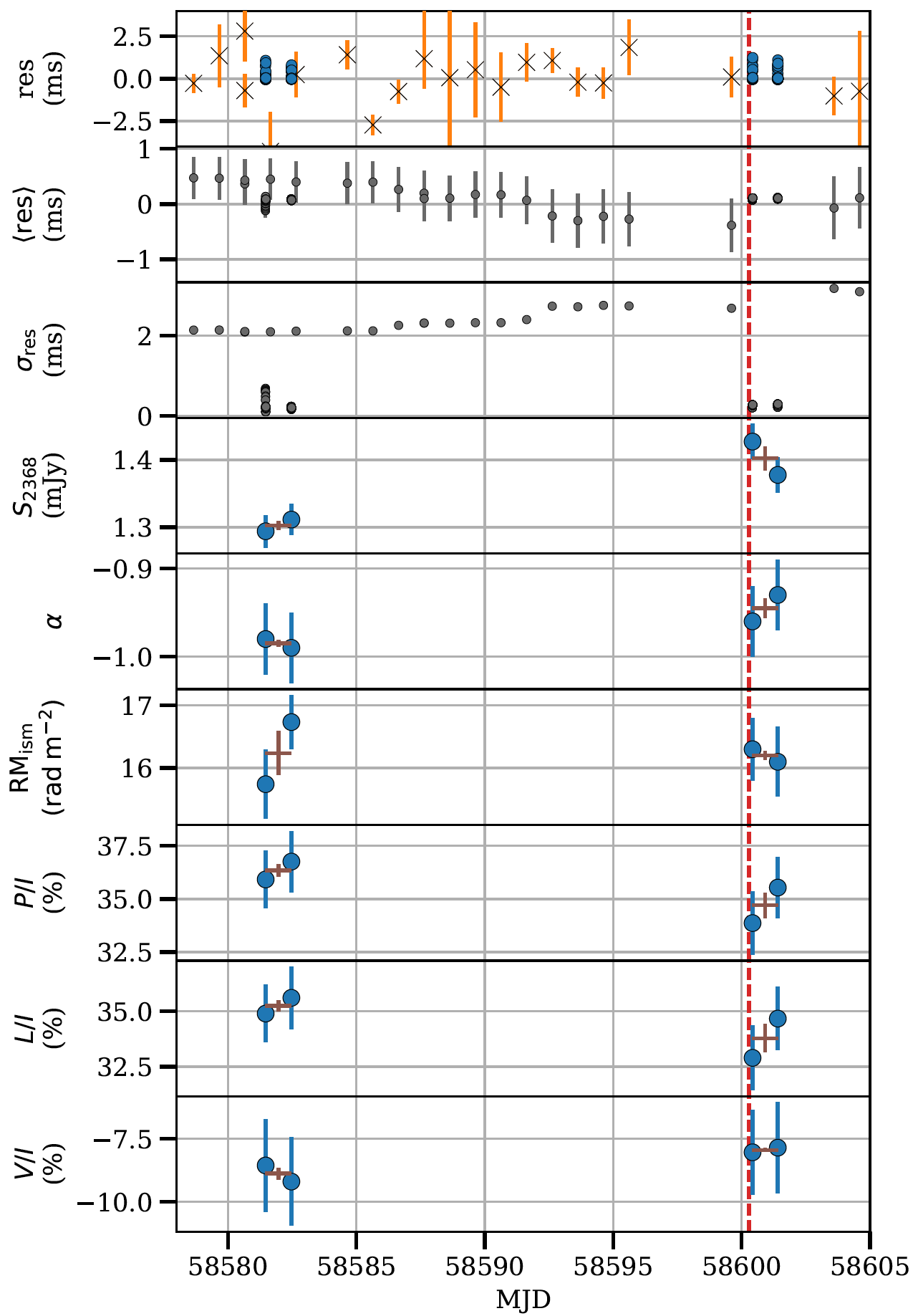Back in early 2019, we observed several pulsars to better characterise their emission properties at radio frequencies and to do so systematically. Serendipitously, we caught one of the pulsars, PSR J1452-6036, about 3 hours after it had suffered a sudden spin-up event (or glitch) in its otherwise stable rotation. The event was only the second published glitch in that pulsar and the first larger one. We then investigated whether the glitch had any influence on its emission properties.
Our paper that reports our findings recently got accepted for publication in the MNRAS journal and is now on the arXiv preprint server. We constrain the temporal evolution of various radiative parameters of the pulsar across the glitch epoch.
Here is a link to the paper and a link to the corresponding data publication on Zenodo.
I show two plots from the paper below.
- Pulsar timing residuals for the best-fitting model (bottom) and without the glitch term (top).

- Timeline of various pulsar parameters across the glitch epoch.
